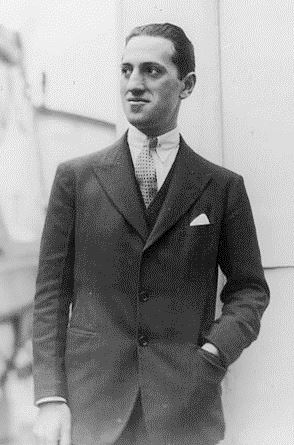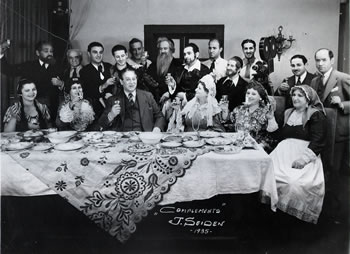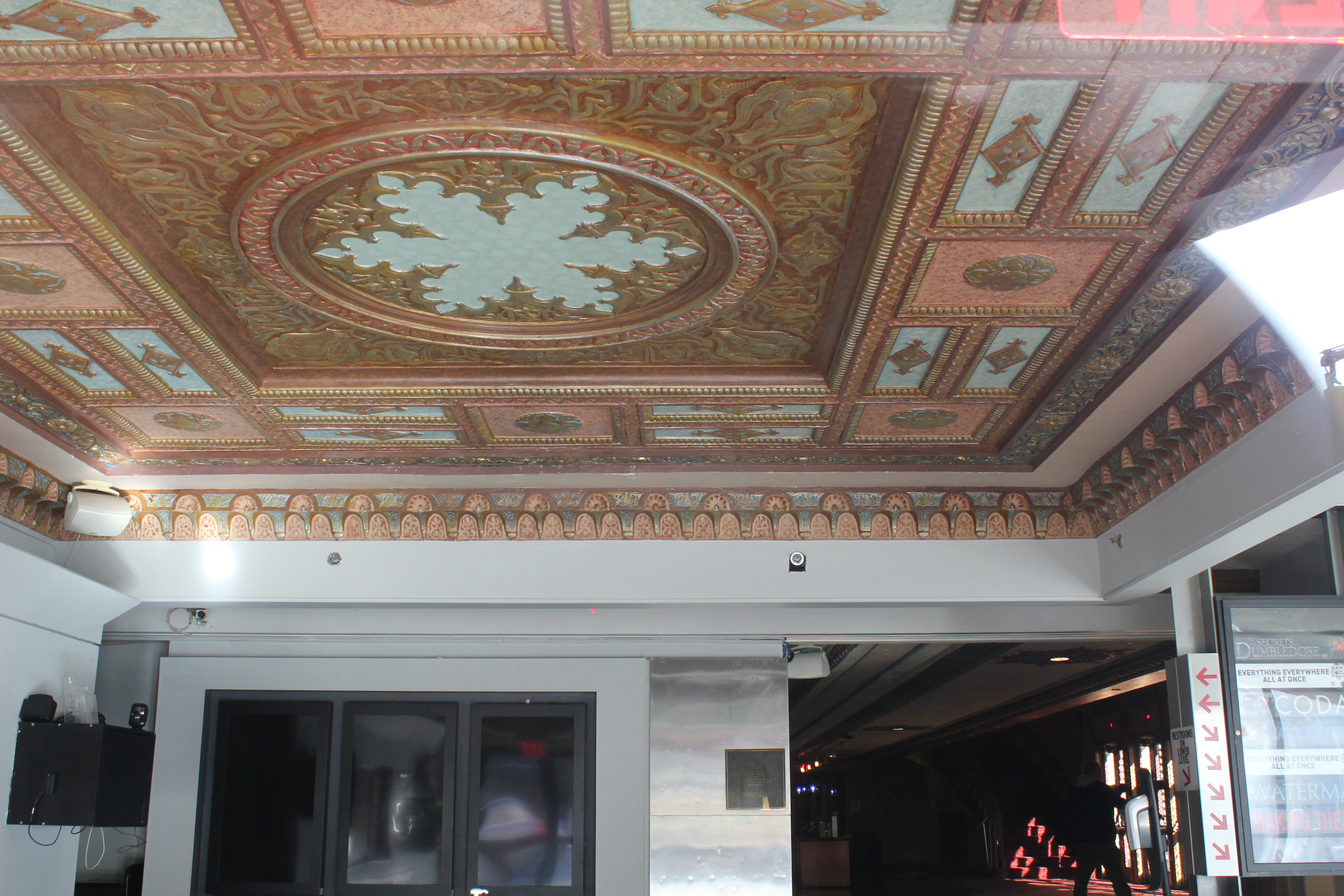|
Yiddish Theatre District
The Yiddish Theatre District, also called the Jewish Rialto and the Yiddish Realto, was the center of New York City's Yiddish theatre scene in the early 20th century. It was located primarily on Second Avenue, though it extended to Avenue B, between Houston Street and East 14th Street in the East Village in Manhattan. The District hosted performances in Yiddish of Jewish, Shakespearean, classic, and original plays, comedies, operettas, and dramas, as well as vaudeville, burlesque, and musical shows. By World War I, the Yiddish Theatre District was cited by journalists Lincoln Steffens, Norman Hapgood, and others as the best in the city. It was the leading Yiddish theater district in the world. The District's theaters hosted as many as 20 to 30 shows a night. After World War II, however, Yiddish theater became less popular. By the mid-1950s few theaters were still extant in the District. History The United States' first Yiddish theater production was hosted in 1882 at ... [...More Info...] [...Related Items...] OR: [Wikipedia] [Google] [Baidu] |
The Yiddish King Lear
''The Yiddish King Lear'' ( yi, דער ייִדישער קעניג ליר ''Der Yidisher Kenig Lir'', also known as ''The Jewish King Lear'') was an 1892 play by Jacob Gordin, and is generally seen as ushering in the first great era of Yiddish theater in New York City’s Yiddish Theater District, in which serious drama gained prominence over operetta. Gordin, a respected intellectual and Yiddish-language novelist, had been recruited by Jacob Adler in an effort to create a more serious repertoire for Yiddish theater, comparable to what he knew from Russian theater. His first two plays, ''Siberia'' and ''Two Worlds'' had failed commercially, although ''Siberia'' was later successfully revived. The play is not a translation of William Shakespeare's ''King Lear'', but the title is an acknowledgement of the roots of the plot. Gordin's play is set in Vilna (Vilnius, Lithuania), in 1890. It begins at the Purim feast given by David Moishele, a wealthy Russian Jewish m ... [...More Info...] [...Related Items...] OR: [Wikipedia] [Google] [Baidu] |
Norman Hapgood
Norman Hapgood (March 28, 1868 – April 29, 1937) was an American writer, journalist, editor, and critic, and an American Minister to Denmark. Biography Norman Hapgood was born March 28, 1868 in Chicago, Illinois to Charles Hutchins Hapgood (1836–1917) and Fanny Louise (Powers) Hapgood (1846–1922). He is the older brother of the journalist and author Hutchins Hapgood. He graduated from Harvard University in 1890 and from the law school there in 1893, then chose to become a writer. Hapgood worked as the drama critic of the New York City ''Commercial Advertiser'' and of the ''Bookman'' in 1897–1902. He was named the editor of '' Collier's Weekly'' in 1903 and remained at that post for about a decade, before leaving to become editor of '' Harper's Weekly'' in June 1913. His editorial style attracted much attention for its vigor and range. He inspired T. G. Masaryk to write the first memorandum to president Wilson for independence of Czechoslovakia from London to Was ... [...More Info...] [...Related Items...] OR: [Wikipedia] [Google] [Baidu] |
Ira Gershwin
Ira Gershwin (born Israel Gershovitz; December 6, 1896 – August 17, 1983) was an American lyricist who collaborated with his younger brother, composer George Gershwin, to create some of the most memorable songs in the English language of the 20th century. With George, he wrote more than a dozen Broadway shows, featuring songs such as " I Got Rhythm", "Embraceable You", " The Man I Love" and " Someone to Watch Over Me". He was also responsible, along with DuBose Heyward, for the libretto to George's opera '' Porgy and Bess''. The success the Gershwin brothers had with their collaborative works has often overshadowed the creative role that Ira played. His mastery of songwriting continued after George's early death in 1937. Ira wrote additional hit songs with composers Jerome Kern, Kurt Weill, Harry Warren and Harold Arlen. His critically acclaimed 1959 book ''Lyrics on Several Occasions'', an amalgam of autobiography and annotated anthology, is an important source for stud ... [...More Info...] [...Related Items...] OR: [Wikipedia] [Google] [Baidu] |
George Gershwin
George Gershwin (; born Jacob Gershwine; September 26, 1898 – July 11, 1937) was an American composer and pianist whose compositions spanned popular, jazz and classical genres. Among his best-known works are the orchestral compositions ''Rhapsody in Blue'' (1924) and ''An American in Paris'' (1928), the songs "Swanee (song), Swanee" (1919) and "Fascinating Rhythm" (1924), the jazz standards "Embraceable You" (1928) and "I Got Rhythm" (1930), and the opera ''Porgy and Bess'' (1935), which included the hit "Summertime (George Gershwin song), Summertime". Gershwin studied piano under Charles Hambitzer and composition with Rubin Goldmark, Henry Cowell, and Joseph Brody (composer), Joseph Brody. He began his career as a song plugger but soon started composing Broadway theater works with his brother Ira Gershwin and with Buddy DeSylva. He moved to Paris, intending to study with Nadia Boulanger, but she refused him, afraid that rigorous classical study would ruin his jazz-influe ... [...More Info...] [...Related Items...] OR: [Wikipedia] [Google] [Baidu] |
Hebrew Actors Union
The Hebrew Actors' Union (HAU) was a craft union for actors in Yiddish theater in the United States (primarily in New York City), and was the first actors' union in the United States. The union was affiliated with the Associated Actors and Artistes of America of the AFL. History The Hebrew Actors' Union was officially founded in 1899 by Jewish labor leader Joseph Barondess, who had been sent by the United Hebrew Trades to aid striking actors at the People's Theatre. The Union was closely associated from its beginning with the American Federation of Labor (AFL) and with the general and Jewish labor movement. A 1925 article in ''The New York Times'' described the union as having, at that time, "over three hundred" members, and notes that it has, "not only placed all of its members in good positions, but hatit has also granted many privileges to non-members..." It also notes that, "A great many members of the union are American-born and all of them are thoroughly Americanized." Th ... [...More Info...] [...Related Items...] OR: [Wikipedia] [Google] [Baidu] |
Sheet Music
Sheet music is a handwritten or printed form of musical notation that uses musical symbols to indicate the pitches, rhythms, or chords of a song or instrumental musical piece. Like its analogs – printed books or pamphlets in English, Arabic, or other languages – the medium of sheet music typically is paper (or, in earlier centuries, papyrus or parchment). However, access to musical notation since the 1980s has included the presentation of musical notation on computer screens and the development of scorewriter computer programs that can notate a song or piece electronically, and, in some cases, "play back" the notated music using a synthesizer or virtual instruments. The use of the term "sheet" is intended to differentiate written or printed forms of music from sound recordings (on vinyl record, cassette, CD), radio or TV broadcasts or recorded live performances, which may capture film or video footage of the performance as well as the audio component. In ever ... [...More Info...] [...Related Items...] OR: [Wikipedia] [Google] [Baidu] |
National Theater (Manhattan)
The National Theater was a Yiddish theatre at the southwest corner of Second Avenue ( Chrystie) and Houston Street in the Yiddish Theater District in Manhattan, New York City, United States. When first built it was leased to Boris Thomashefsky and Julius Adler. Its grand opening as the Adler-Thomashefsky National Theatre was on September 24, 1912. Zylbercweig, Zalmen (1934).Tomashefsky, Boris . ''Leksikon fun yidishn teater'' exicon of the Yiddish theatre Vol. 2. Warsaw: Farlag Elisheva. Columns 804-840; here: col. 822. rogram(1912). ... [...More Info...] [...Related Items...] OR: [Wikipedia] [Google] [Baidu] |
Second Avenue Theatre
Village East by Angelika (originally the Louis N. Jaffe Art Theatre, also Village East, and formerly known by several other names) is a movie theater at 189 Second Avenue, on the corner with 12th Street, in the East Village of Manhattan in New York City. Part of the former Yiddish Theatre District, the theater was designed in the Moorish Revival style by Harrison Wiseman and built from 1925 to 1926 by Louis Jaffe. In addition to Yiddish theatre, the theater has hosted off-Broadway shows, burlesque, and movies. Since 1991, it has been operated by Angelika Film Center as a seven-screen multiplex. Both the exterior and interior of the theater are New York City designated landmarks, and the theater is on the National Register of Historic Places. Village East's main entrance is through a three-story office wing on Second Avenue, which has a facade of cast stone. The auditorium is housed in the rear along 12th Street. The first story contains storefronts and a lobby, while the seco ... [...More Info...] [...Related Items...] OR: [Wikipedia] [Google] [Baidu] |
Grand Theatre (New York City)
The Grand Theatre was a theatre in the Yiddish Theatre District in Manhattan in New York City built for Yiddish productions, the first of its kind.Rosenfeld, Lulla AdlerThe Yiddish theatre and Jacob P. Adler p. 299 (1988) The theater was built in 1904 by Jacob Pavlovitch Adler, a famous Russian-born Jewish actor. Background On March 12, 1902, Sophia Karp, with Harry Fischel and playwright Joseph Lateiner, founded the Grand Theatre in New York City. The city's first theatre built specifically for Yiddish productions,Moses Rischin, ''The promised city: New York's Jews, 1870–1914'' the Grand was typical of Yiddish theatres of the time by being largely artist-managed. Besides Karp and Lateiner, the directors included leading man Morris Finkel, comedian Bernard Bernstein, L. S. Gottlieb, and composer Louis Friedsell. It opened on February 5, 1903. Two events in 1904 symbolized the decline of the serious stage. Jacob Gordin failed as the director of his own theater and Jacob Ad ... [...More Info...] [...Related Items...] OR: [Wikipedia] [Google] [Baidu] |
New York City Landmarks Preservation Commission
The New York City Landmarks Preservation Commission (LPC) is the New York City agency charged with administering the city's Landmarks Preservation Law. The LPC is responsible for protecting New York City's architecturally, historically, and culturally significant buildings and sites by granting them landmark or historic district status, and regulating them after designation. It is the largest municipal preservation agency in the nation. , the LPC has designated more than 37,000 landmark properties in all five boroughs. Most of these are concentrated in historic districts, although there are over a thousand individual landmarks, as well as numerous interior and scenic landmarks. Mayor Robert F. Wagner Jr. first organized a preservation committee in 1961, and the following year, created the LPC. The LPC's power was greatly strengthened after the Landmarks Law was passed in April 1965, one and a half years after the destruction of Pennsylvania Station. The LPC has been involve ... [...More Info...] [...Related Items...] OR: [Wikipedia] [Google] [Baidu] |
Lower East Side
The Lower East Side, sometimes abbreviated as LES, is a historic neighborhood in the southeastern part of Manhattan in New York City. It is located roughly between the Bowery and the East River from Canal to Houston streets. Traditionally an immigrant, working-class neighborhood, it began rapid gentrification in the mid-2000s, prompting the National Trust for Historic Preservation to place the neighborhood on their list of America's Most Endangered Places in 2008. The Lower East Side is part of Manhattan Community District 3, and its primary ZIP Code is 10002. It is patrolled by the 7th Precinct of the New York City Police Department. Boundaries The Lower East Side is roughly bounded by East 14th Street on the north, by the East River to the east, by Fulton and Franklin Streets to the south, and by Pearl Street and Broadway to the west. This more extensive definition of the neighborhood includes Chinatown, the East Village, and Little Italy. A less extensiv ... [...More Info...] [...Related Items...] OR: [Wikipedia] [Google] [Baidu] |





